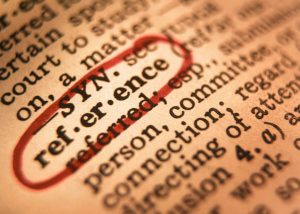Comprehensive Candidate Screening – Personal References

This post continues the discussion on the seven elements that encompass a comprehensive screening process. The last post covered the Social Media Check and what to consider when thinking about assessing someone from that vantage point.
Why Follow Up?
Topic four, which is personal references and the role they play in providing feedback that is needed to decide on whether or not to give a person direct access to children. References often bubble up need-to-know information about the character, commitment, and a person’s history of working with children. One of the main benefits of contacting someone’s references is that it reduces the rate of incidence for abuse.
Unfortunately, less than 5% of personal references are ever contacted. This can be due to a lack of bandwidth, an established HR policy, or being familiar with the person and seeing no need to reach out to others for their perspective. Whatever the case may be, current research indicates that if you want to attract new families and keep existing ones, you need to demonstrate that you’re willing to do whatever it takes to keep kids safe. This includes thoroughly vetting those working directly with children.
Keep in mind, 90% of those who prey on children have no red flags in their history when undergoing a background check, and less than 10% of child sexual abusers are ever criminally prosecuted. Both of these stats speak to the direct need of going outside the standard written application process for further input.
What’s the best way to get the information you need? Is it helpful to ask the same questions? What physical cues should catch your attention? Here are some tips to make your reference check successful.
The Experts Weigh In
Look at the reference check as a way to solicit feedback from outside sources. First, speak to those from your organization who’ve interviewed the candidate or have had any past discussions. Ask each person if they have any concerns? What would they follow up on? What areas would they like additional clarification on?
According to Priscilla Claman, the president of Career Strategies, “You can’t rely on your hunch,” she says. “Even though you’re right 90% of the time, the 10% that you’re wrong”—if, say, a candidate has vastly overstated his qualifications or has other professional skeletons in his closet—“can be very damaging.”
Also, author and senior advisor Claudio Fernández-Aráoz shares, Relevant external observers are in a better position to give you an accurate estimate of whether the candidate will be able to perform the specific circumstances and challenges” of your organization. What’s more, they also provide perspective on the candidate’s “strengths and limitations” so that you can “support the person” once hired.
Preparation is a key advantage and a telltale sign of a good organization. Listed below are some tips to get you ready for the conversation.
Setting the Stage
It’s best to block out one hour for each reference call. More than likely the conversation won’t take that long, but it’s important to have the time you need and not feel rushed. Be sure to confirm that the person you’re speaking with has the experience, background, and position to evaluate the candidate. It’s best to have as much information about the candidate as possible before speaking with a reference.
References should never include relatives or blood relations. This is standard for most organizations, but it’s always good to clarify.
When speaking with the reference, it’s helpful to exhibit confidence and support for the candidate. If a referee picks up on any negativity, they will be less likely to open up to you and may even cut the conversation short and relay back to the candidate what they observed.
Once you’ve confirmed the details for the reference, it’s important to have reviewed the questions you’re going to ask. Listed below are some questions to consider for a position working directly with children.
The Big Reveal
Once you’ve connected with the reference make sure to introduce yourself, the organization you represent and a description of the role you’re trying to fill. It’s best to make clear that the position includes working directly with children. Questions to consider:
- How long have you known this person and in what capacity?
- With the role that I have described, has the candidate had to perform in similar circumstances?
- Specifically, what was the candidate’s role and responsibilities in your organization?
- Describe in your own words his/her character?
- For churches, ask the reference to share their opinion on the person’s spiritual strengths and challenges?
- Have the reference describe a time they observed the candidate working with children. How did the candidate perform?
With any answers, if you detect some hesitancy or concern, you could ask is there was someone else you might contact who could better answer the question. If they say yes, take their name and number and verify with the candidate that this person would be better suited to answer the questions being asked.
Make sure that your judgment of what the reference is saying is based on fact. Try not to read too much into the way the reference is answering. Try not to interrupt and make sure to listen to what they are saying or not saying. Try and keep open-ended or broad questions to a minimum. In reality, you’re trying to gather the facts on this person’s performance and ability to work with children.
A Small Degree of Separation
In today’s climate, if you’re unable to get the information you need, you can always use additional channels such as your network or someone who may have had experience with the candidate, professional associations, past workers and LinkedIn.
Bottom Line
Incomplete vetting is a big risk when granting someone access to children. You must truly understand the people you’re working with before giving them access to society’s most vulnerable, the children. As with all the steps in the comprehensive screening process, the goal is to eliminate the barriers that prevent you from getting the information you need.
Click here to learn more about the benefits of secure children’s check-in or join us for a free demo. We also invite you to visit the KidCheck blog or join our growing community on Twitter, Facebook, Google+, Instagram, and Pinterest.
Sources:
https://hbr.org/2016/07/the-right-way-to-check-someones-references
The Child Safeguarding – Policy Guide, Tchividjian & Berkovits
On Guard – Deepak Reju


